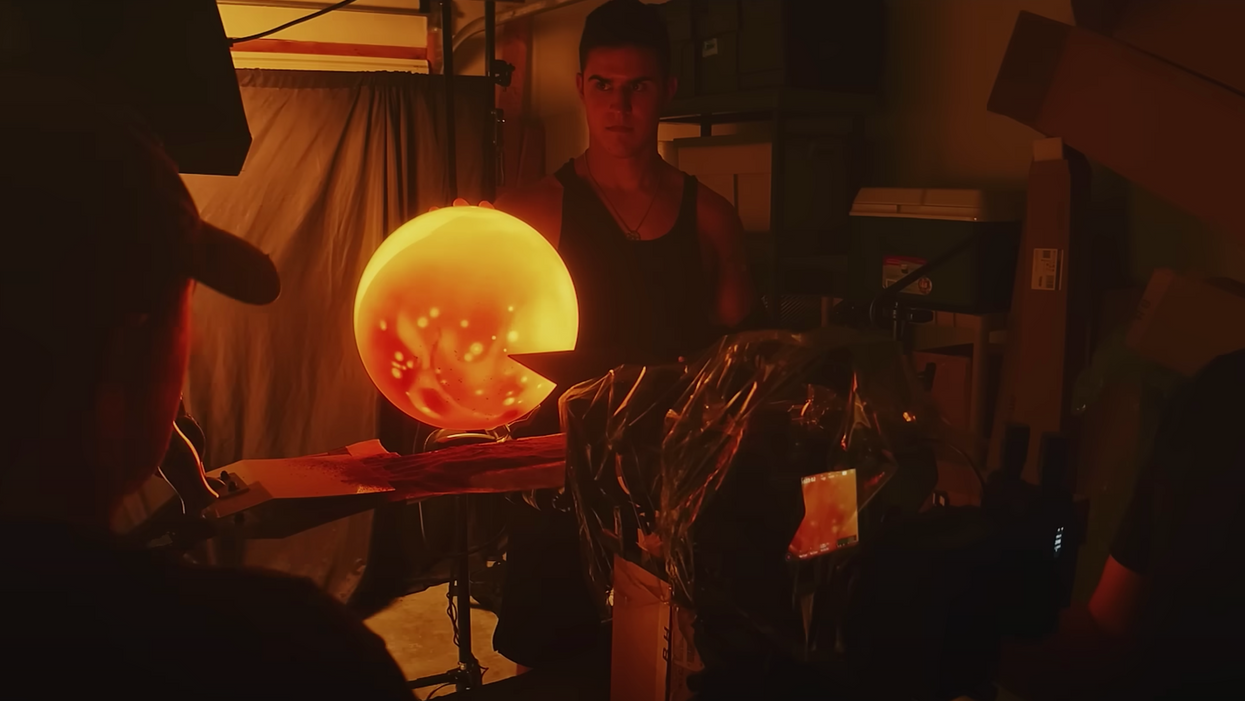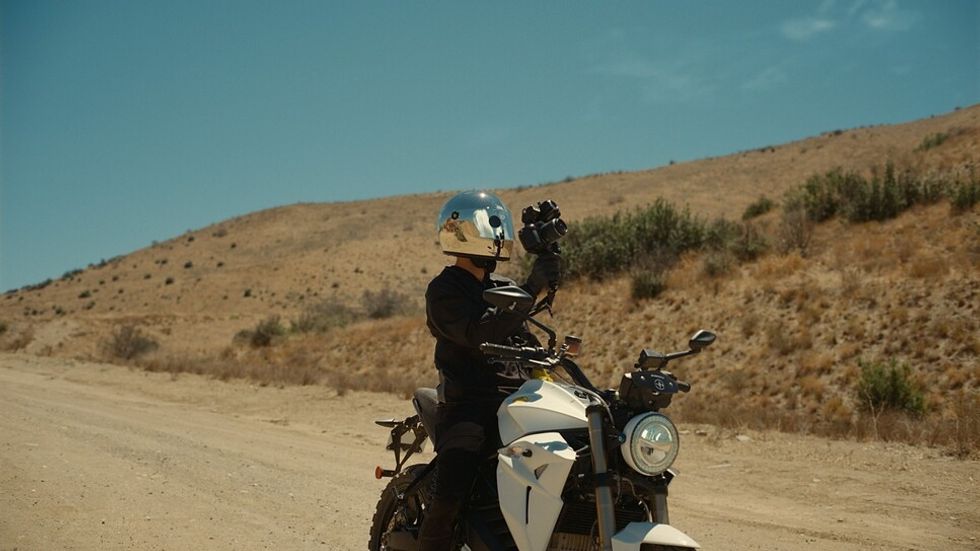How To Recreate the Nuclear Explosion From 'Oppenheimer' With Zero CGI
You know, without building a nuke of your own and exploding it in your backyard.

Recreating the nuclear explosion from Oppenheimer
Taking a page perhaps from the atomic and eternal vignettes of the universe’s creation in Terrence Malick’s Tree of Life, some of the coolest (and most cinematic) moments from Christopher Nolan’s Oppenheimer feature these iconic and beautifully shot close-ups featuring the rawest elements of nuclear fission and atomic explosion.
As with anything cool seen on the big screen, many filmmaking film fans took these shots as inspiration to recreate something similar on their own. While we wouldn’t recommend crafting a weapon of mass destruction yourself in your backyard, we do support those looking to try these cinematic effects out themselves—ideally without the use of CGI.
So, following the lead of YouTuber William H Baker, let’s explore how you too can recreate the nuclear explosions from Oppenheimer with zero CGI.
Glitter Swirls
It’s fun to watch Baker go through the process of doing his research and trying to reverse learn how Nolan created many of these different effects. While our host is going off of mostly footage from the trailers, he pinpoints three main effects plus the actual nuclear explosion itself as his targets.
The first effect he recreates is this “glitter swirls” effect which you see sprinkled throughout the trailer and the film which comes from the chaotic buzzing of particles seen and theorized in the plot of the film.
After starting with just water, glitter, and a light, Baker quickly discovers that the shape of the water container plays more of a role in the direction of your particle flow than you might think. He eventually settles on using a fishbowl inside of a rectangle aquarium container as the best way to get the right flow with his glitter and lighting setup.

Oppenheimer Glitter Swirls
Long Exposure
For this second effect, Baker takes us through his experimentation workflow where he at first suspects a trick of long exposure, before realizing that Nolan most likely used a fast-spinning reflective material. Baker’s eventual discovery leads him to find a very similar-looking effect achieved by spinning a paperclip attached to a black string in front of his camera setup.
With the help of a power drill for a fast and consistent speed, you can see just how much this reflective light effect looks eerily similar to the flying ions created in Oppenheimer. However, as you can see in the behind-the-scenes attempts, please be sure to be careful when setting up any of these high-speed elements as they can often get loose and possibly hit someone.

Oppenheimer Long Exposure
Credit: William H Baker
Swirling Liquids
Honestly, I’m quite impressed with Baker’s research and reasoning when reverse engineering these different effects. For this swirling liquid look which is meant to showcase the close-ups of the eventual fiery explosions in these nuclear bombs, Baker has to do quite a bit of trial and error to find the right liquid and oils for this effect.
If you’re looking for a fun and cinematic science experiment to try at home, testing these different liquids in front of a brightly lit camera setup can make for some great research into visual effects for a myriad of different needs. However, at the end of the day, Baker found the right mixture for this effect with water and pigment powder and a little color grading on the backend.

Oppenheimer Swirling Liquids
The Nuke
Finally, for the actual nuclear bomb itself, Baker elected to go with a layered approach to a sphere structure to recreate the ball of the explosion. By lighting the inside of the sphere, he was able to illuminate an explosion with its uniquely textured exterior.
He adds to the illusion by rigging up some poster board to recreate the “crashing into the ground” effect with dirt.

Recreating the nuke from Oppenheimer
Overall, the effect is quite effective and surprisingly realistic, and close to the source material. Of course, if you were to try to create these same effects on your own, you could probably come up with some different approaches and still achieve similar results.
But the fun of this project is the journey itself as a great exercise in practical VFX which doesn’t require dozens of hours of CGI.
- Celebrate Barbenheimer With This AI Movie Trailer ›
- What Cameras Did Christopher Nolan Use on 'Oppenheimer'? ›
- 'Oppenheimer' Attempted to Use a Rotary Prism Camera—What Is It and Why Did Nolan Want It? ›
- Christopher Nolan Tells Us Why 'Oppenheimer' Was Told Through a Singular Point of View | No Film School ›






















